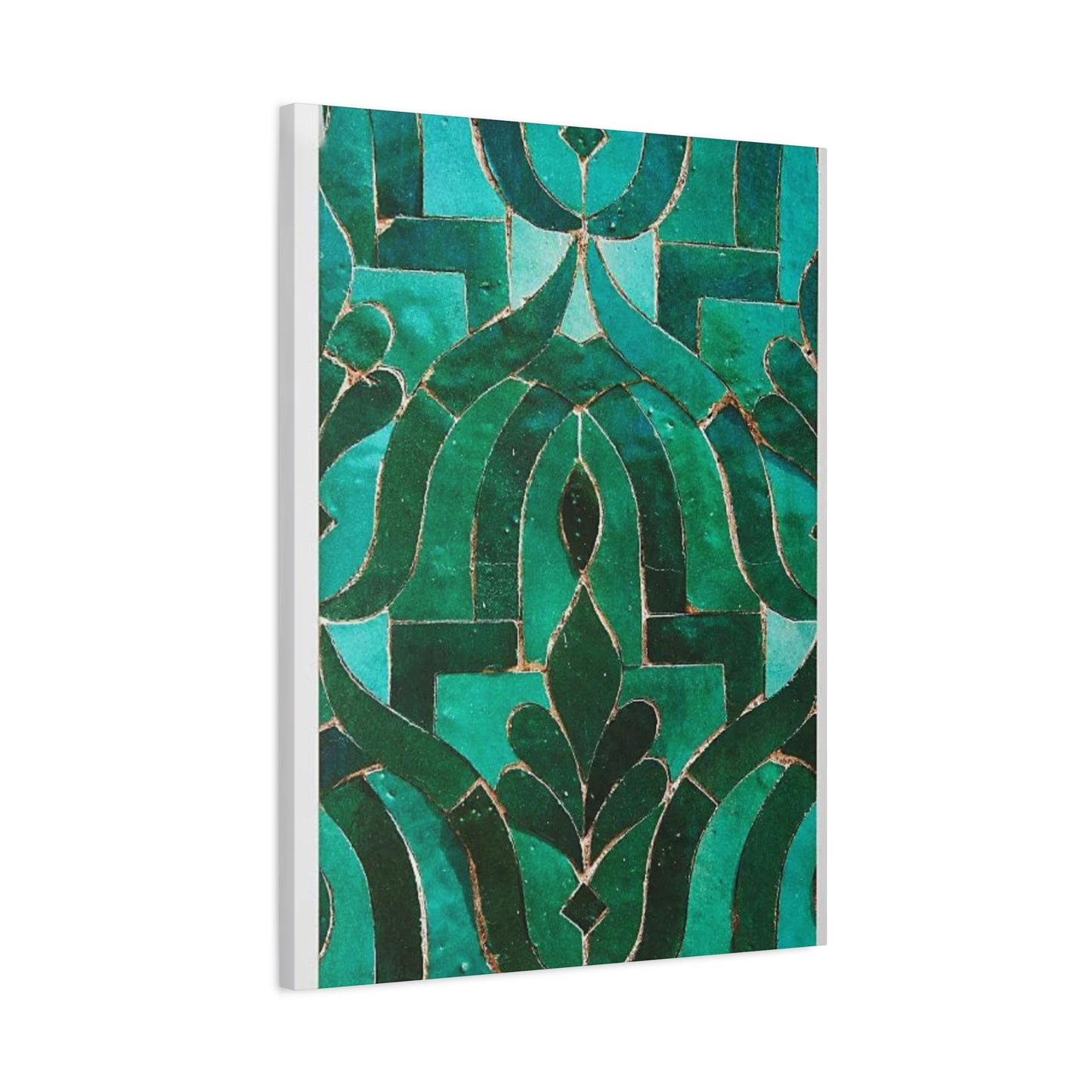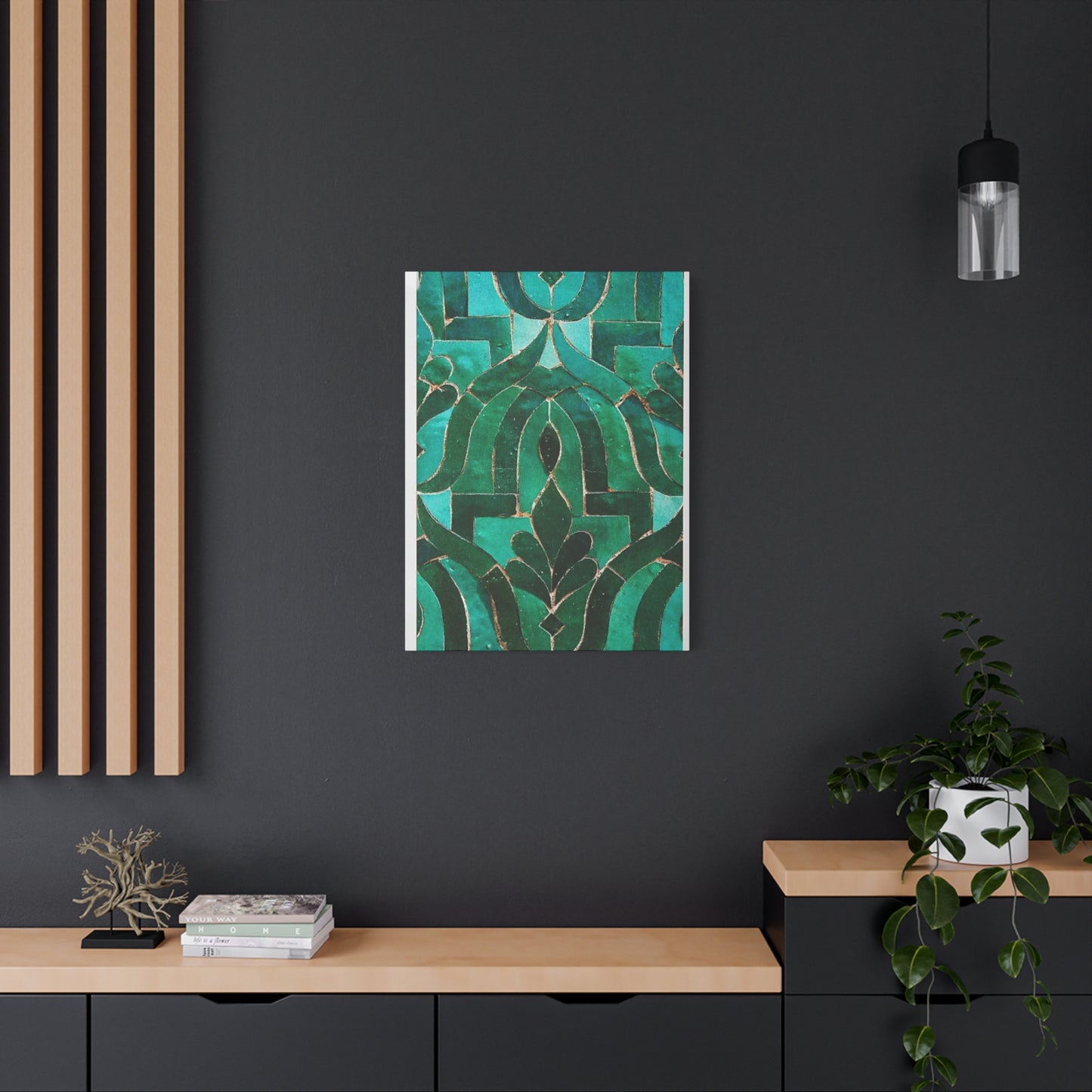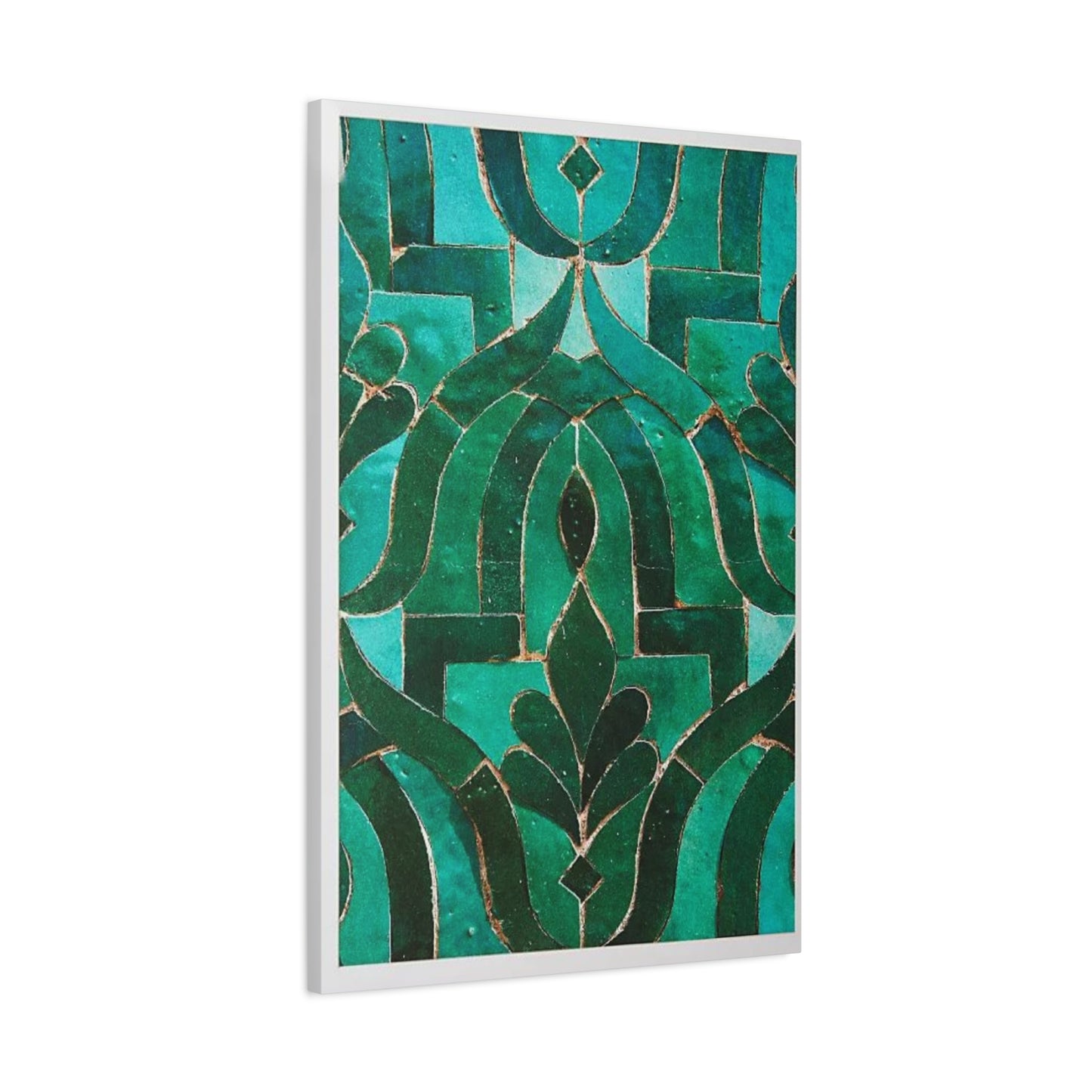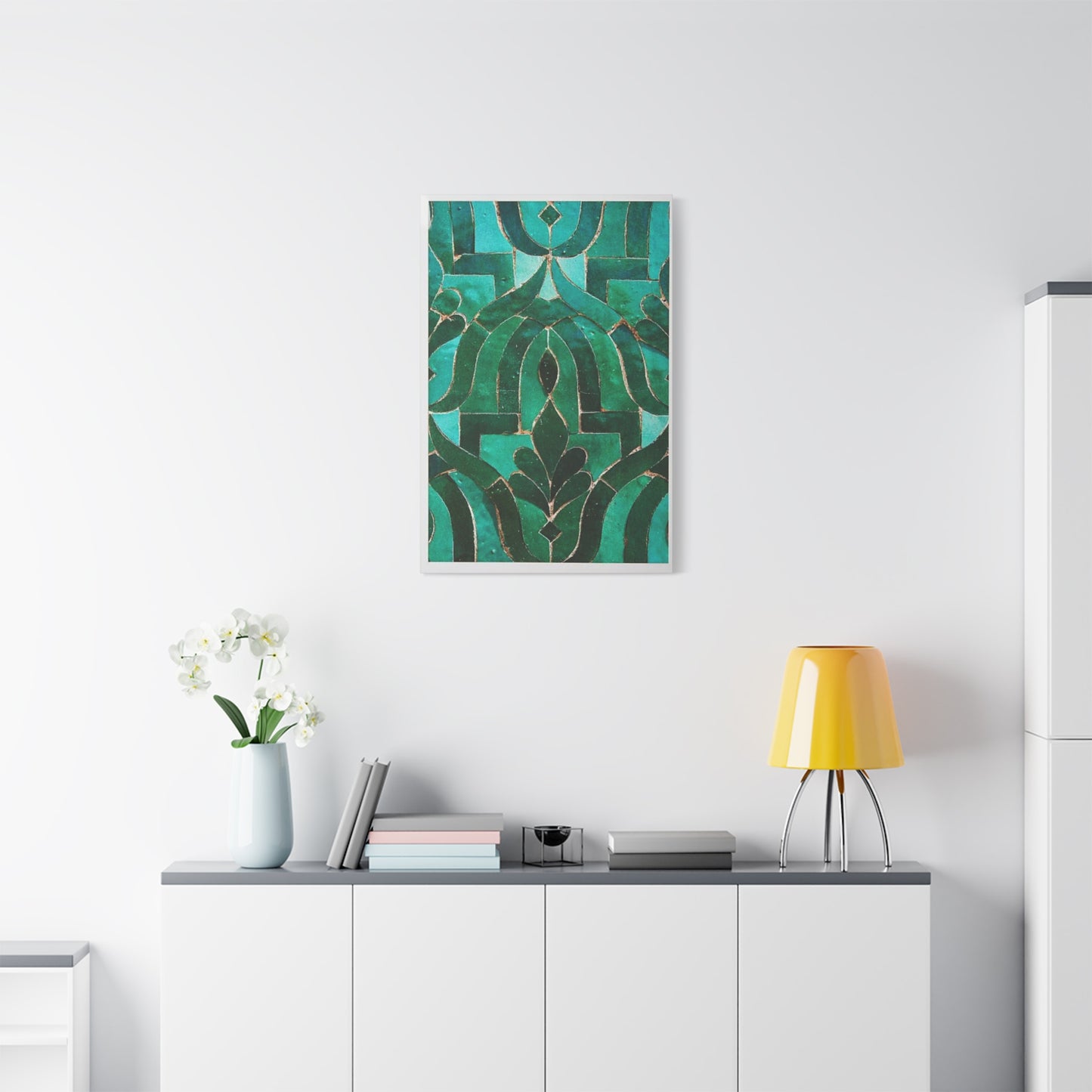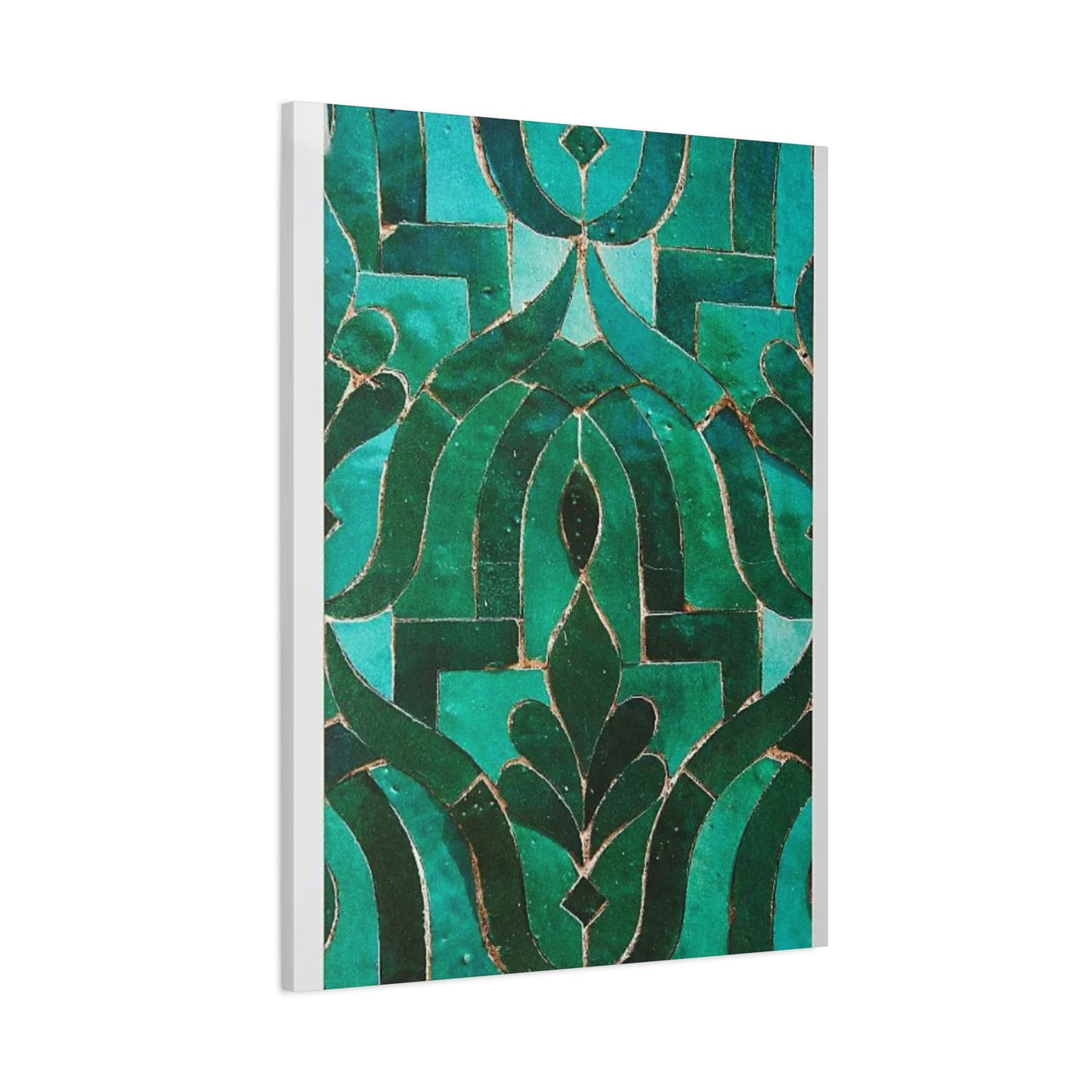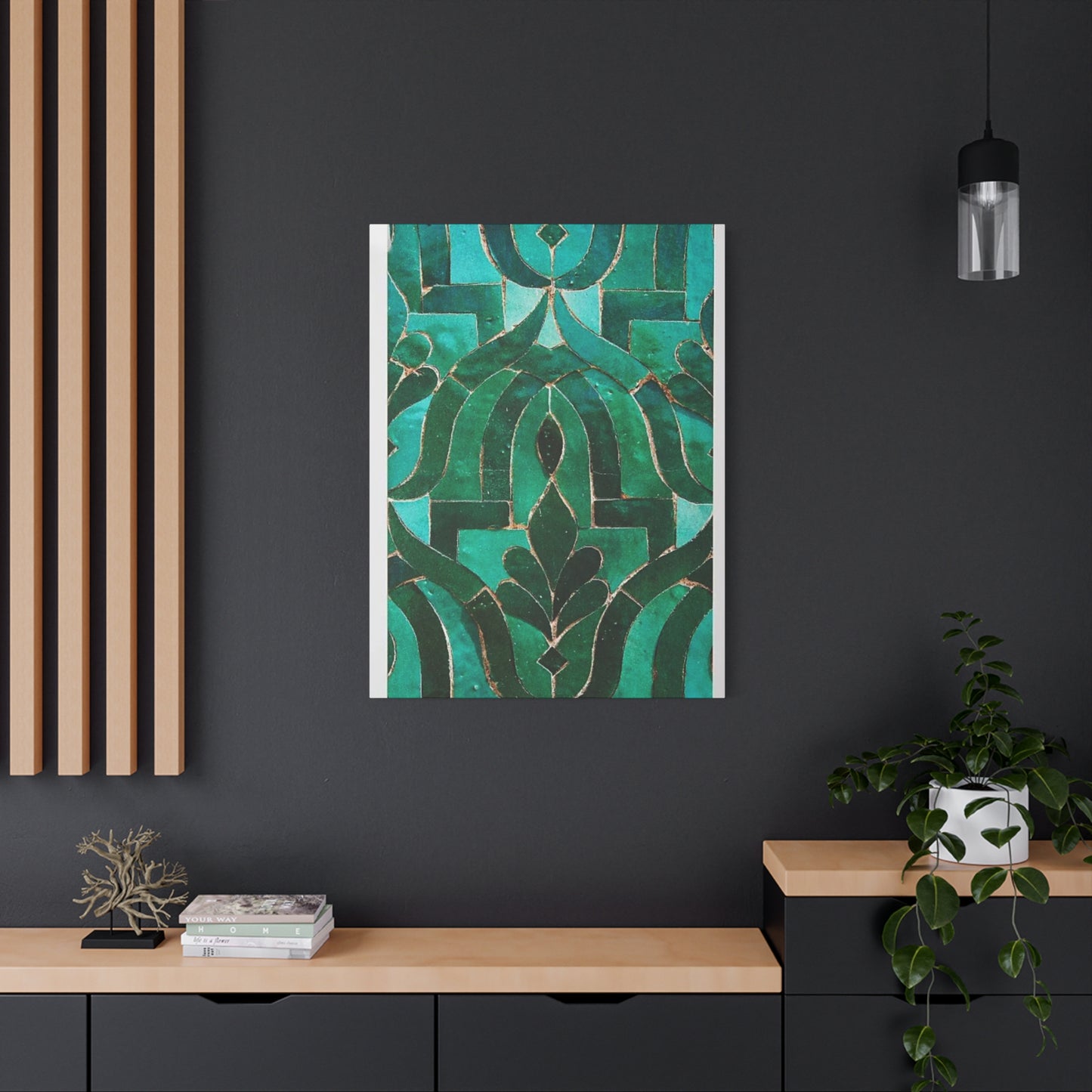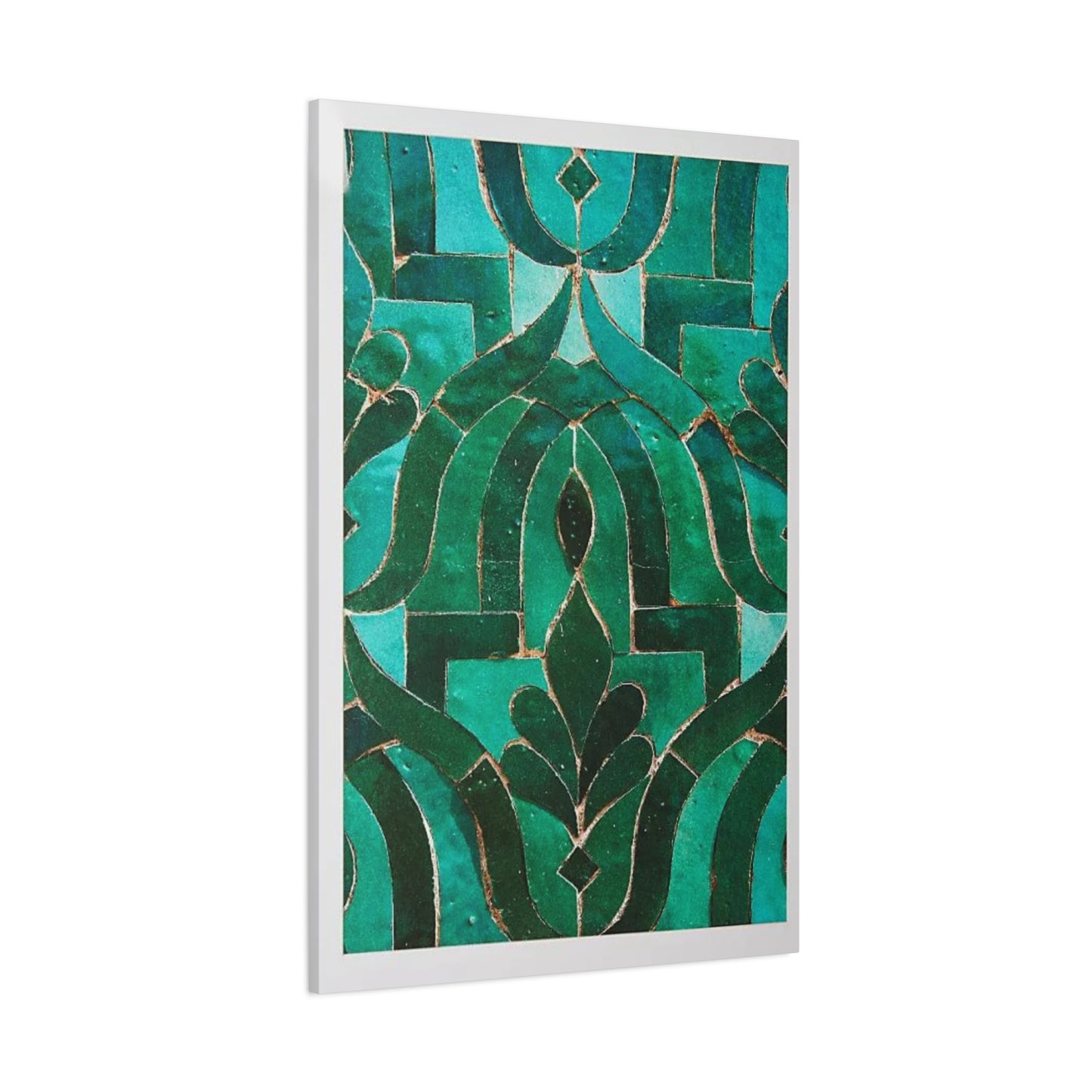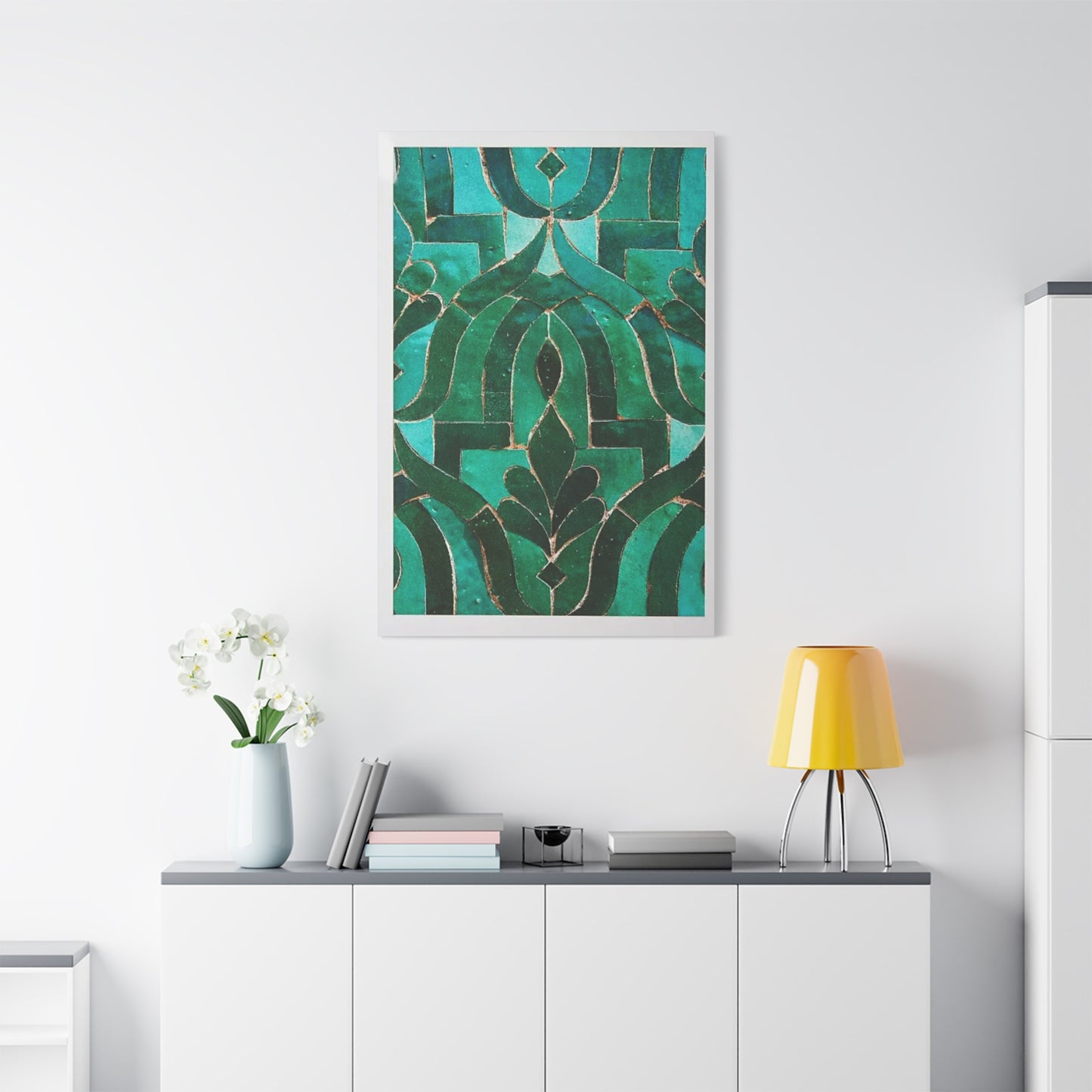Moroccan Architecture Design Wall Art: A Comprehensive Guide to Transforming Your Space
The allure of North African aesthetics has captivated interior design enthusiasts worldwide, offering a timeless blend of cultural richness and visual splendor. When incorporating elements inspired by this ancient civilization into modern living spaces, homeowners discover an extraordinary opportunity to create environments that speak to both history and contemporary sensibilities. The intricate details, warm color palettes, and geometric precision found in these artistic expressions provide endless possibilities for elevating any room's ambiance.
This comprehensive exploration delves into the magnificent world of North African-inspired decorative pieces, examining how centuries-old architectural traditions translate into stunning contemporary home accessories. From the mesmerizing patterns adorning historical palaces to the vibrant hues that characterize traditional marketplaces, these design elements offer transformative potential for residential and commercial spaces alike. Understanding the cultural significance, artistic techniques, and practical applications of these decorative approaches empowers homeowners to make informed decisions that honor tradition while embracing modern aesthetics.
Understanding the Cultural Significance of North African Decorative Traditions
The artistic heritage of North Africa represents a convergence of multiple civilizations spanning over a millennium. Arab, Berber, African, and European influences merged throughout history to create distinctive visual languages that continue to inspire designers worldwide. These artistic traditions emerged from practical needs combined with spiritual beliefs, resulting in decorative approaches that serve both functional and symbolic purposes within architectural contexts.
The geometric complexity characterizing this aesthetic tradition stems from Islamic artistic principles that emphasize abstract representation over figurative imagery. Mathematical precision combines with creative expression to generate patterns that seem to expand infinitely, symbolizing the boundless nature of divine creation. These intricate designs required master craftsmen who spent years perfecting techniques passed down through generations, ensuring each creation met exacting standards of beauty and precision.
Color theory plays an essential role in traditional North African design philosophy. The vibrant blues reminiscent of Mediterranean waters, warm terracottas reflecting desert landscapes, verdant greens symbolizing oasis gardens, and golden yellows capturing sunlight all contribute to palettes that evoke emotional responses while maintaining visual harmony. Understanding these color relationships helps contemporary homeowners recreate authentic atmospheres within their own spaces.
The architectural elements found throughout historical North African cities demonstrate remarkable engineering achievements combined with aesthetic brilliance. Arched doorways, ornate courtyards, intricate tile work, and carved plasterwork showcase the sophisticated understanding of both structural requirements and decorative possibilities. These features transformed functional buildings into artistic masterpieces that continue inspiring designers centuries after their creation.
Vibrant Color Schemes That Define North African Aesthetics
The chromatic intensity characteristic of North African design creates immediate visual impact while maintaining sophisticated balance. Deep sapphire blues derived from natural pigments contrast beautifully with crisp whites, creating striking combinations that feel both dramatic and serene. These color relationships reflect the natural environment where brilliant skies meet whitewashed buildings, establishing harmonious connections between human-made structures and surrounding landscapes.
Terracotta and burnt orange tones evoke the warmth of desert environments, bringing comforting earthiness into interior spaces. These hues ground design schemes while providing versatile backgrounds for more vibrant accents. The natural quality of these colors creates welcoming atmospheres that feel simultaneously exotic and familiar, making them ideal for various decorating contexts.
Emerald and jade greens reference the lush gardens hidden within arid landscapes, symbolizing renewal and prosperity. These refreshing tones provide visual relief from warmer colors while maintaining connection to natural themes. When incorporated thoughtfully, green accents create dynamic compositions that feel balanced rather than overwhelming.
Golden yellows and amber tones capture the quality of sunlight filtering through ornate screens, creating warm glows that transform spaces throughout the day. These luminous colors add richness without heaviness, elevating ordinary rooms into extraordinary environments. The reflective quality of metallic gold accents enhances this effect, introducing subtle glamour that feels authentic rather than ostentatious.
Purple and magenta accents appear in traditional textiles and decorative elements, providing unexpected pops of color that energize design schemes. These bold choices demonstrate the confident approach to color characteristic of North African aesthetics, encouraging homeowners to embrace adventurous combinations that might initially seem unconventional.
Architectural Elements That Define Traditional North African Structures
The horseshoe arch represents one of the most recognizable architectural features associated with North African design. This distinctive shape combines structural efficiency with visual elegance, creating openings that feel both substantial and graceful. The mathematical precision required to construct perfect horseshoe arches demonstrates the advanced engineering knowledge possessed by historical builders.
Courtyards served as central organizing elements in traditional North African architecture, providing private outdoor spaces that mediate between public streets and intimate domestic areas. These transitional zones often featured fountains, gardens, and seating areas, creating peaceful retreats from bustling city environments. The courtyard concept translates beautifully into contemporary design through artwork depicting these serene spaces.
Mashrabiya screens, consisting of intricate wooden lattices, controlled light and airflow while maintaining privacy. These functional elements also served decorative purposes, casting complex shadow patterns that changed throughout the day. The interplay between solid and void, light and shadow, creates dynamic visual experiences that can be captured in photographic and painted representations.
Zellige tilework involves meticulously arranged ceramic fragments forming elaborate geometric patterns. This labor-intensive craft produces stunning surfaces that shimmer with color and texture. The precision required to create perfect zellige compositions reflects the value placed on craftsmanship and attention to detail within traditional North African artistic practices.
Carved plasterwork adorns walls and ceilings with flowing arabesques and geometric configurations. These relief patterns create three-dimensional surfaces that respond beautifully to changing light conditions. The delicate nature of plaster carving requires exceptional skill, resulting in decorative treatments that feel simultaneously substantial and ethereal.
Geometric Pattern Systems in Traditional North African Design
The mathematical foundations underlying traditional North African patterns reflect sophisticated understanding of geometry and symmetry. Star polygons, tessellations, and interlocking shapes create compositions that maintain visual interest across large surfaces. These patterns often incorporate multiple symmetry systems simultaneously, producing complex designs that reward sustained observation.
Repetition with variation characterizes the most successful pattern applications, where basic motifs repeat while subtle changes prevent monotony. This approach creates rhythmic visual experiences that feel dynamic rather than static. The balance between consistency and variation demonstrates the nuanced aesthetic sensibilities of traditional craftsmen.
Scale relationships within pattern systems require careful consideration to achieve appropriate visual impact. Large-scale patterns make bold statements suitable for focal points, while smaller patterns create texture without overwhelming spaces. Understanding how pattern scale affects perception helps homeowners select pieces that work harmoniously within their specific contexts.
Color distribution within geometric patterns significantly affects their overall appearance. High contrast combinations create dramatic effects emphasizing pattern complexity, while tonal variations produce subtler results that blend more readily into diverse decorating schemes. The strategic use of metallic accents within patterns adds dimension and luminosity.
Border treatments frame central pattern fields while providing visual transition to surrounding surfaces. These decorative edges often incorporate different pattern systems than central areas, creating hierarchy and directing viewer attention. Well-designed borders enhance overall compositions without competing with primary decorative elements.
Traditional Doorway Designs and Their Symbolic Meanings
Ornate doorways throughout North Africa serve as transitions between public and private realms, marking these thresholds with appropriate decorative emphasis. The visual treatment of entrances communicates information about the importance of spaces beyond while welcoming visitors with displays of craftsmanship and hospitality.
Color choices for traditional doorways carry symbolic significance beyond aesthetic considerations. Rich blues suggest protection and spiritual blessing, while natural wood tones emphasize connection to earth and tradition. Painted surfaces often feature multiple colors arranged in geometric configurations that enhance architectural proportions.
Hardware elements including knockers, hinges, and handles receive decorative treatment that transforms functional components into artistic details. Metalwork featuring geometric patterns or calligraphic elements demonstrates the comprehensive approach to design where every element receives appropriate aesthetic attention.
Carved wooden panels display remarkable craftsmanship through relief patterns that catch and reflect light throughout the day. These three-dimensional surfaces create constantly changing visual experiences as illumination angles shift. The depth and complexity of carved work showcase the skill levels achieved by traditional artisans.
Scale and proportion relationships between doorways and surrounding architectural elements follow principles that create visual harmony. Oversized doors make dramatic statements appropriate for significant buildings, while more modest proportions suit residential contexts. Understanding these relationships helps homeowners select artwork that maintains appropriate scale within their spaces.
Desert Landscape Integration in North African Architecture
The relationship between built structures and surrounding desert environments profoundly influenced North African architectural development. Buildings often appear to emerge organically from landscapes rather than imposing upon them, demonstrating respectful integration of human habitation within natural settings.
Color palettes drawn from desert environments ensure structures harmonize with surroundings. Sandy beiges, warm browns, and dusty roses mirror the earth while occasional bright accents reference scattered wildflowers and distant mountains. This connection to place creates design schemes that feel inherently coherent.
Fortress-like exterior walls contrast with ornate interior treatments, reflecting the need for protection from harsh climates while creating comfortable living environments. This dramatic contrast between austere exteriors and luxurious interiors adds interest to architectural photography and artistic representations.
Oasis imagery featuring palm trees, water features, and lush vegetation provides counterpoint to sparse desert surroundings. These elements symbolize life-sustaining resources while creating cooling visual effects. Representations of oasis scenes bring refreshing energy to interior spaces.
Kasbah structures rising from desert plains create dramatic silhouettes against expansive skies. These fortified complexes demonstrate adaptive architectural responses to environmental challenges while maintaining aesthetic appeal. The monumental quality of kasbahs translates well into large-scale decorative pieces.
Courtyard Gardens as Central Design Features
Traditional North African courtyard gardens represent paradise on earth, providing cool retreats from external heat and chaos. These carefully orchestrated spaces balance architectural elements with natural features, creating harmonious environments that engage all senses.
Central fountains serve as focal points while providing soothing water sounds that mask street noise. The movement and reflections of water add dynamic elements to otherwise static spaces. Representations of fountain courtyards bring calming qualities to interior environments.
Planted areas arranged in geometric beds reflect the same mathematical precision found in architectural decoration. This formal approach to garden design creates order while celebrating natural growth. The combination of rigid structure and organic plant forms produces pleasing visual tension.
Seating areas integrated into courtyard designs encourage lingering and contemplation. Built-in benches adorned with tilework or carved details provide comfortable spots for rest and conversation. These social spaces reflect cultural values emphasizing hospitality and community.
Transitional arcades surrounding courtyards create shaded walkways connecting different areas while framing views of central gardens. These liminal spaces mediate between interior rooms and outdoor areas, expanding usable living spaces. The rhythm of repeating arches creates satisfying visual sequences.
Palatial Architecture and Luxury Interior Spaces
Royal palaces throughout North Africa showcase the highest achievements in architectural design and decorative arts. These magnificent structures demonstrate what becomes possible when unlimited resources support master craftsmen working at the peak of their abilities.
Reception halls featuring soaring ceilings, elaborate tile work, and intricate carved plaster create overwhelmingly beautiful spaces designed to impress visitors. The scale and complexity of these rooms reflect the power and cultural sophistication of rulers who commissioned them.
Private chambers balance grandeur with intimacy through carefully considered proportions and decoration. While maintaining high decorative standards, residential quarters provide comfortable environments suitable for daily life. This combination of luxury and livability remains relevant for contemporary homeowners.
Throne rooms and formal audience chambers employ architectural drama to reinforce social hierarchies. Elevated platforms, elaborate canopies, and strategic lighting focus attention on positions of authority. The theatrical quality of these spaces translates well into dramatic decorative pieces.
Hidden gardens and private courtyards within palace complexes provided rulers with peaceful retreats from public responsibilities. These intimate spaces feature refined decoration emphasizing quality over scale. Representations of these gardens bring sophisticated elegance to residential interiors.
Zellige Tilework Traditions and Modern Applications
The ancient craft of zellige production involves hand-cutting glazed ceramic tiles into precise geometric shapes that fit together like elaborate puzzles. This painstaking process produces surfaces with subtle variations that add life and character to finished installations.
Color glazing techniques create the vibrant hues characteristic of traditional zellige work. Multiple firings build up color depth while maintaining glossy finishes that catch and reflect light beautifully. The luminous quality of well-executed zellige adds richness to any space.
Pattern complexity in zellige installations ranges from relatively simple repeating motifs to intricate compositions requiring extensive planning and execution. Master craftsmen maintain mental templates allowing them to create complex patterns without written plans, demonstrating remarkable spatial reasoning abilities.
Three-dimensional applications of zellige principles create textured surfaces adding depth to flat walls. Raised and recessed elements produce shadow patterns that enhance underlying geometric designs. This dimensional quality distinguishes zellige from simpler flat tile applications.
Contemporary interpretations of zellige techniques adapt traditional methods for modern contexts while respecting historical precedents. These updated approaches maintain the essential character of traditional work while accommodating current aesthetic preferences and installation requirements.
Archway Designs and Structural Beauty
The structural and aesthetic functions of arches merge seamlessly in traditional North African architecture. These curved openings distribute weight efficiently while creating graceful transitions between spaces. The marriage of engineering necessity and artistic expression produces elements that serve multiple purposes simultaneously.
Pointed arches rising to sharp peaks create dramatic vertical emphasis drawing eyes upward. This Gothic influence adapted to North African contexts produces distinctive hybrid forms combining multiple architectural traditions. The resulting designs feel simultaneously familiar and exotic.
Multi-lobed arches featuring scalloped profiles add decorative complexity beyond simple curves. These elaborate forms require precise calculation and execution, showcasing advanced technical capabilities. The visual richness of multi-lobed arches makes them popular subjects for artistic representation.
Horseshoe arches with their characteristic curves extending beyond semicircles create distinctive profiles immediately recognizable as North African in origin. The mathematical elegance of these curves appeals to those appreciating both artistic beauty and geometric precision.
Stacked or nested arches create layered spatial experiences as viewers pass through multiple thresholds. This progressive revelation of space adds mystery and anticipation to architectural experiences. Photographs capturing these sequential arches demonstrate spatial depth effectively.
Lantern Designs and Atmospheric Lighting Effects
Traditional North African lanterns featuring pierced metal work cast intricate shadow patterns that transform surrounding spaces. These functional objects serve as sculpture even when unlit, but truly come alive when internal light sources activate their decorative potential.
Geometric perforations in lantern walls follow the same mathematical principles governing architectural decoration. The precision required to create perfectly aligned patterns in curved metal surfaces demands exceptional craftsmanship. The resulting objects function as three-dimensional expressions of two-dimensional pattern systems.
Colored glass inserts add chromatic dimension to lantern designs, filtering light through jewel tones that create magical atmospheric effects. The interplay between clear and colored sections produces dynamic lighting experiences changing as viewers move around illuminated lanterns.
Scale variations in lantern designs range from intimate table-top versions to substantial hanging fixtures appropriate for large spaces. Understanding how lantern size affects visual impact helps homeowners select pieces creating desired effects within specific contexts.
Chain suspension systems for hanging lanterns become decorative elements themselves when executed with appropriate attention to detail. The visual rhythm of repeating links adds textural interest while serving structural functions. Clustered lanterns at varying heights create compelling focal points.
Mosaic Artistry and Decorative Surface Treatments
Mosaic techniques involving small colored tiles arranged to form images or patterns allow for remarkable detail and chromatic richness. The labor-intensive nature of mosaic creation ensures each piece represents significant investment in time and skill.
Material choices for mosaic work affect both appearance and durability. Glass tesserae create brilliant color and light-reflective qualities, while stone provides more subtle earthiness. Ceramic pieces offer middle ground between these extremes. Understanding material properties helps appreciation of finished works.
Grout treatment significantly affects mosaic appearance beyond simple structural functions. Color-matched grouting creates seamless surfaces where individual pieces blend into unified compositions. Contrasting grout emphasizes the mosaic technique itself, celebrating the assembled nature of finished works.
Pictorial mosaics depicting scenes, figures, or objects demonstrate the ultimate expression of the medium. Creating recognizable images from small geometric pieces requires exceptional planning and execution. These tour-de-force creations showcase the full potential of mosaic artistry.
Abstract geometric mosaics emphasize pattern and color relationships rather than representational imagery. These non-objective compositions feel particularly compatible with traditional North African aesthetic principles favoring abstract decoration over figurative representation.
Interior Design Elements and Spatial Organization
Traditional North African interiors demonstrate sophisticated understanding of spatial relationships and hierarchies. Rooms flow into one another through carefully orchestrated sequences creating sense of discovery as occupants move through spaces. This processional quality adds interest to even modest structures.
Alcove seating areas recessed into walls provide intimate spaces within larger rooms. These architectural features create cozy spots for conversation or contemplation while maintaining visual connection to main spaces. The nested quality of alcoves adds spatial complexity.
Ceiling treatments receive elaborate decorative attention in traditional interiors, transforming often-neglected surfaces into artistic showcases. Coffered ceilings, carved beams, and painted designs reward upward glances. This comprehensive approach to decoration ensures beauty surrounds occupants completely.
Floor coverings including tiles, carpets, and rugs define spaces while adding color, pattern, and comfort. The layering of different floor treatments creates visual interest and functional zoning within open-plan areas. Traditional patterns translate beautifully into contemporary rug designs.
Window treatments balancing privacy, light control, and decoration demonstrate the multi-functional thinking characteristic of traditional North African design. Screens, shutters, and curtains work together creating flexible systems adaptable to changing needs throughout days and seasons.
Bold Pattern Combinations for Contemporary Living Spaces
Modern applications of traditional North African patterns benefit from understanding historical precedents while avoiding strict reproduction. Contemporary designers adapt classic motifs for current contexts, maintaining essential character while updating scale, color, and application methods.
Mixing patterns successfully requires considering scale relationships, color harmonies, and directional movement within designs. Large-scale patterns pair well with smaller supporting patterns creating visual hierarchy. Careful color coordination prevents pattern combinations from appearing chaotic.
Accent walls featuring bold patterns create focal points without overwhelming entire rooms. This strategic approach allows incorporation of visually intense designs while maintaining overall balance. Single statement walls anchor decorating schemes while leaving remaining surfaces relatively neutral.
Pattern repetition throughout spaces via artwork, textiles, and accessories creates thematic coherence without exact matching. This echoing approach feels more sophisticated than overly coordinated schemes. Varied expressions of related patterns demonstrate confident design sensibilities.
Balancing patterned elements with solid colors prevents visual fatigue while allowing eyes to rest. Strategic placement of plain surfaces between decorated areas creates breathing room essential for comfortable environments. This push-pull between activity and calm produces dynamic yet livable spaces.
Cultural Authenticity and Respectful Design Appropriation
Incorporating design elements from cultures outside one's own heritage requires thoughtful consideration beyond simple aesthetic appreciation. Understanding the historical and cultural contexts from which these designs emerge demonstrates respect while enriching personal understanding.
Quality reproduction versus mass-produced imitation represents important distinction when selecting pieces for home display. Supporting artisans maintaining traditional techniques preserves cultural heritage while ensuring higher-quality products. Investment in authentic craftsmanship pays dividends in both beauty and durability.
Educational approaches to decorating help homeowners appreciate not just visual appeal but deeper significance of design choices. Learning about symbolism, techniques, and historical contexts transforms decoration from mere styling into meaningful cultural engagement.
Avoiding stereotypical or reductive representations honors the complexity of North African design traditions. Thoughtful selection of pieces representing various aspects of these rich traditions creates more nuanced and interesting collections than relying on obvious cliches.
Supporting contemporary artists and craftspeople working within these traditions ensures living continuation rather than museum-piece preservation. Current practitioners adapt traditional techniques for modern contexts, keeping traditions vital and relevant.
Color Psychology and Emotional Impact in Design
The psychological effects of color significantly influence how spaces feel and function. Understanding these relationships empowers homeowners to create environments supporting desired moods and activities. Traditional North African color palettes offer particularly rich emotional resonance.
Cool blues promote calmness and contemplation, making them ideal for bedrooms, meditation spaces, and areas dedicated to focused work. The association of blue with water and sky creates instinctive positive responses. Various blue tones from pale aqua to deep navy offer options for different intensity levels.
Warm earth tones including terracotta, sienna, and ochre create welcoming, grounding atmospheres. These colors feel inherently comforting and accessible, making them suitable for social spaces where hospitality matters. The natural quality of earth tones ensures they remain timeless rather than trendy.
Energizing yellows and golds stimulate mental activity and optimism. These sunny hues work well in kitchens, dining areas, and creative workspaces where active engagement matters. The reflective quality of metallic golds adds sophisticated glamour.
Luxurious purples and deep reds suggest richness and sensuality appropriate for intimate spaces. These bold colors make dramatic statements requiring confidence to deploy successfully. When used thoughtfully, these intense hues create memorable impact.
Refreshing greens bring natural vitality indoors, creating connections to gardens and growing things. These balanced colors neither overstimulate nor bore, making them versatile for various applications. Green tones ranging from sage to emerald offer options for different effects.
Material Textures and Tactile Qualities in Design
The sensory richness of traditional North African spaces extends beyond visual appeal to encompass tactile experiences. Varied material textures create environments engaging multiple senses simultaneously. While decorative pieces primarily address vision, awareness of implied textures enhances appreciation.
Smooth glazed ceramic surfaces reflect light beautifully while suggesting cool, clean qualities. The glassy finish of well-executed tile work adds refinement to spaces while remaining practical for maintenance. Visual representations of these surfaces communicate their essential qualities effectively.
Rough-hewn stone and exposed brick provide textural contrast to polished surfaces. These raw materials ground spaces with natural earthiness while showcasing honest construction. The play between refined and rustic creates dynamic visual interest.
Carved wood surfaces with their raised and recessed details invite closer inspection. The dimensional quality of carved work creates constantly changing appearances as light angles shift. Photographs capturing carved details effectively communicate their three-dimensional nature.
Woven textiles including carpets, cushions, and wall hangings add softness balancing harder architectural surfaces. The visible weave structure of traditional textiles adds human-scale detail to spaces. Representations of these textiles suggest comfort and warmth.
Metalwork surfaces ranging from polished brass to patinated copper introduce reflective qualities and color variations. The living nature of metal finishes that change over time adds interest and character. These dynamic surfaces never appear static or boring.
Seasonal Adaptability and Year-Round Relevance
The enduring appeal of North African-inspired design stems partly from its ability to feel appropriate across seasons. The warm color palettes provide comfort during winter months while geometric patterns maintain visual interest without feeling heavy during summer.
Layering decorative elements allows seasonal adjustments without complete redesigns. Adding or removing textile elements, swapping artwork, and adjusting accessories creates subtle seasonal shifts while maintaining overall design integrity. This flexible approach maximizes longevity of design investments.
Natural light variations throughout the year interact differently with patterns and colors, creating seasonal changes without physical alterations. The same artwork appears different in bright summer sun versus low winter light. This responsive quality keeps spaces feeling fresh.
Temperature associations with colors affect seasonal appropriateness perceptions. Cool blues feel particularly welcome during warm weather while warm earth tones provide psychological comfort during cold months. Strategic color deployment accommodates these seasonal preferences.
Holiday and celebration decoration integrates easily with North African-inspired bases. The rich colors and patterns provide excellent backgrounds for festive additions without clashing. This compatibility makes these design approaches practical for homes hosting seasonal gatherings.
Scale Considerations for Different Room Sizes
Selecting appropriately scaled decorative pieces ensures they enhance rather than overwhelm or disappear within spaces. Understanding how size relationships affect visual impact guides successful choices for specific contexts.
Large-scale pieces make bold statements appropriate for spacious rooms with high ceilings. These substantial artworks anchor spaces and provide focal points around which remaining elements organize. Undersized pieces in large rooms feel lost and ineffective.
Medium-sized works suit most residential contexts, providing significant presence without dominating. These versatile pieces adapt to various placements including over furniture, between windows, or gallery-wall arrangements. The middle ground scale offers maximum flexibility.
Small decorative pieces work best in groupings rather than isolated placements. Clustered small works create cumulative impact exceeding individual pieces while allowing for interesting compositional arrangements. This approach suits spaces where larger single pieces feel overwhelming.
Vertical versus horizontal orientations affect how pieces interact with architectural features and furniture arrangements. Tall vertical pieces emphasize ceiling height while horizontal formats complement furniture widths. Considering these relationships ensures harmonious integration.
Multi-panel installations allow customization of overall dimensions while maintaining design continuity. These flexible arrangements adapt to various wall sizes and configurations. The ability to adjust spacing between panels accommodates architectural features like windows or doors.
Placement Strategies for Maximum Visual Impact
Strategic artwork placement transforms collections from random assemblages into cohesive design statements. Understanding fundamental placement principles ensures pieces enhance spaces effectively while avoiding common mistakes that diminish their impact.
Eye-level hanging represents the standard starting point for most artwork, placing centers approximately 57-60 inches from floor level. This comfortable viewing height works for most contexts though adjustments may suit specific circumstances. Furniture arrangements affect practical eye-level heights.
Relationship to furniture requires careful consideration to ensure pieces appear intentionally integrated rather than randomly hung. Artwork should relate proportionally to furniture beneath, generally spanning 50-75 percent of furniture width. This relationship creates visual coherence.
Grouping multiple pieces requires planning to ensure unified appearance. Laying out arrangements on floors before hanging prevents costly trial-and-error wall damage. Maintaining consistent spacing between grouped pieces creates professional-looking installations.
Lighting considerations dramatically affect how artwork appears. Natural light sources throughout days create changing appearances while artificial lighting provides control over dramatic effects. Avoiding direct sunlight prevents fading while strategic artificial lighting enhances viewing experiences.
Negative space surrounding artwork affects its visual impact significantly. Crowding pieces too closely diminishes individual presence while excessive isolation feels disconnected. Balancing artwork presence with surrounding emptiness creates optimal viewing conditions.
Complementary Design Styles and Cross-Cultural Fusion
North African-inspired elements combine successfully with various design approaches, creating eclectic yet coherent spaces reflecting personal style diversity. Understanding which combinations work well helps homeowners create unique environments.
Modern minimalist aesthetics benefit from the addition of North African patterns and colors, providing warmth and visual interest without cluttering clean lines. The geometric nature of traditional patterns feels compatible with modern sensibilities. Strategic accent pieces prevent minimalism from feeling cold.
Bohemian maximalist approaches embrace North African elements enthusiastically, layering patterns, colors, and textures in visually rich combinations. The abundant decorative tradition fits naturally within boho schemes valuing global influences. Careful curation prevents overwhelming chaos.
Mediterranean styles share historical and geographical connections with North African design, making them natural partners. The color palettes, architectural features, and casual elegance of Mediterranean design complement North African influences seamlessly.
Contemporary eclectic approaches use North African pieces as accent elements within diverse collections. The strong visual identity of these pieces ensures they make statements without requiring exclusive focus. This integration demonstrates confident design sensibilities.
Traditional formal interiors incorporate North African elements as exotic accents providing interest within otherwise conventional schemes. The contrast between familiar traditional furniture and unexpected North African artwork creates dynamic tension. This approach suits those wanting touches of adventure without complete stylistic commitment.
Color Coordination with Existing Interior Schemes
Integrating new decorative elements into established color schemes requires considering both harmony and contrast. North African-inspired pieces offer flexibility through their typically rich color palettes containing multiple hues.
Monochromatic existing schemes benefit from carefully chosen colorful additions providing relief from single-color environments. Even neutral spaces require visual interest, making colorful artwork valuable for preventing blandness. Strategic color injection enlivens without overwhelming.
Analogous color schemes using colors adjacent on color wheels create harmonious combinations. If existing schemes emphasize blues, adding North African pieces featuring blues with green or purple accents maintains coherence while adding complexity. This approach feels naturally unified.
Complementary color contrasts using opposite color wheel positions create dynamic tension. Blue-dominated rooms gain energy from orange-toned accents while warm environments benefit from cool counterpoints. These bold contrasts require confidence but produce memorable results.
Neutral base schemes provide maximum flexibility for colorful artwork additions. Gray, beige, or white backgrounds allow North African pieces to shine without color competition. This approach suits those wanting artwork to dominate as primary color sources.
Existing colorful schemes require careful selection ensuring new additions enhance rather than clash. Identifying shared colors between existing schemes and potential new pieces ensures integration. Small samples help preview compatibility before commitment.
Investment Value and Long-Term Appreciation
Quality decorative pieces represent significant financial commitments deserving careful consideration beyond immediate aesthetic appeal. Understanding factors affecting long-term value helps guide purchasing decisions toward pieces providing lasting satisfaction.
Original artwork by recognized artists typically appreciates over time, particularly from creators whose reputations grow. While investment shouldn't drive decorative choices entirely, awareness of potential value increases adds another consideration layer. Researching artists before purchasing proves worthwhile.
Limited edition prints maintain value better than unlimited mass-produced reproductions. Numbered editions with artist signatures provide authenticity documentation supporting future value. Understanding edition sizes helps assess relative rarity.
Handcrafted items created using traditional techniques possess inherent value beyond mass-produced alternatives. The time investment, skill levels, and cultural continuity represented by authentic craftsmanship justify premium pricing. These pieces often appreciate as traditional techniques become rarer.
Timeless design quality transcending temporary trends ensures pieces remain relevant across decades. While following current trends feels appealing initially, classic approaches provide longer satisfaction periods. Investing in timeless designs proves financially and aesthetically wise.
Proper care and maintenance preserve both appearance and value. Following conservation guidelines for cleaning and displaying pieces prevents damage diminishing worth. Documentation including purchase records and authenticity certificates supports future valuations.
Creating Gallery Walls with Cohesive Themes
Gallery wall arrangements allow display of multiple pieces in coordinated groupings creating larger visual impact than individual placements. Successful gallery walls require planning ensuring individual pieces relate while maintaining distinct identities.
Thematic consistency through shared subject matter, color palettes, or stylistic approaches unifies diverse pieces. North African architectural themes provide excellent gallery wall foundations through varied specific subjects maintaining overarching coherence. Mixing doorways, arches, courtyards, and patterns creates interesting variety.
Frame consistency versus variety represents key decision points. Matching frames create clean unified appearances while varied frames add eclectic character. Neither approach definitively surpasses the other; choosing depends on desired overall effects and existing room aesthetics.
Symmetrical versus asymmetrical layouts produce different effects. Formal symmetrical arrangements feel traditional and orderly while asymmetrical compositions appear more casual and contemporary. Room architecture and furniture arrangements often suggest appropriate approaches.
Planning layouts before installation prevents mistakes and unnecessary wall damage. Creating full-scale paper templates or using digital planning tools allows experimentation without commitment. This preparation time investment yields professional-looking results.
Allowing for future additions when initially planning gallery walls accommodates collection growth. Leaving strategic spaces permits seamless integration of additional pieces without complete redesigns. This forward-thinking approach acknowledges evolving tastes and growing collections.
Lighting Techniques for Artwork Enhancement
Proper lighting dramatically affects artwork appearance and viewer experience. Understanding basic lighting principles empowers homeowners to showcase pieces optimally while avoiding common mistakes that diminish their impact.
Natural light provides beautiful illumination but poses conservation challenges through UV exposure causing gradual fading. Positioning artwork away from direct sunlight while utilizing general ambient daylight balances enjoyment with preservation. UV-filtering glazing provides additional protection.
Track lighting offers flexibility for directing illumination precisely where desired. Adjustable fixtures accommodate different piece sizes and positions while allowing modifications as collections evolve. This adaptability makes track systems excellent investments for serious collectors.
Picture lights mounted directly above or below artwork provide dedicated illumination highlighting specific pieces. These focused fixtures work particularly well for featured works deserving special emphasis. LED picture lights offer energy efficiency and minimal heat production protecting artwork.
Accent lighting using spotlights or wall washers creates dramatic effects emphasizing texture and dimensional qualities. Carefully angled accent lights cast shadows revealing surface variations invisible under flat lighting. This approach particularly benefits pieces with carved or relief elements.
Ambient room lighting affects artwork appearance significantly even when pieces receive dedicated illumination. Considering overall lighting schemes ensures artwork appears attractive under various conditions rather than only when specifically spotlighted. Dimmer controls add flexibility.
Maintenance and Care for Long-Term Preservation
Protecting decorative investments through proper care ensures they remain beautiful for years or decades. Understanding appropriate maintenance approaches for different materials and formats prevents damage while minimizing required effort.
Regular dusting using soft, dry cloths removes accumulated particles that dull appearances and potentially cause abrasion. Gentle handling prevents damage to surfaces and frames. Establishing routine cleaning schedules prevents heavy buildup requiring more aggressive intervention.
Avoiding moisture exposure protects paper-based artwork and prevents mold growth on various materials. Maintaining appropriate humidity levels between 40-50 percent prevents both excessive dryness causing brittleness and dampness encouraging deterioration. Climate control benefits both artwork and occupant comfort.
Protecting from direct sunlight prevents fading and material degradation. UV-filtering glazing, window treatments, and strategic placement away from direct sun exposure all contribute to preservation. Some fading remains inevitable over very long periods, but preventive measures dramatically slow processes.
Professional cleaning for valuable or delicate pieces ensures appropriate treatment without risk of damage from well-intentioned but improper amateur efforts. Conservation specialists possess knowledge and materials for safely addressing serious cleaning needs. This expertise justifies costs for significant pieces.
Proper storage for pieces not currently displayed prevents damage during interim periods. Acid-free materials, climate control, and protection from physical damage preserve pieces for eventual rotation back into display. Regular rotation extends lifespans of entire collections.
Historical Evolution of North African Architectural Styles
Understanding the historical development of North African design traditions enriches appreciation of contemporary expressions. These styles evolved over centuries through cultural exchanges, technological advances, and changing social needs.
Pre-Islamic Berber architecture established foundational approaches adapted by later cultures. Earth construction techniques, fortified structures, and climate-responsive designs originated in these ancient traditions. These practical solutions remain relevant today.
Arab-Islamic conquest beginning in the seventh century introduced new architectural vocabularies emphasizing geometric decoration, courtyard planning, and specific building types including mosques and madrasas. The fusion of Arab and indigenous Berber traditions created distinctive regional styles.
Moorish Spain developed particularly refined architectural expressions combining Arab, Berber, and European influences. The sophisticated designs created in Andalusia influenced North African development as craftsmen and refugees returned following the Reconquista. This cross-pollination enriched both regions.
Ottoman expansion into North Africa introduced Turkish architectural elements including specific dome types and minaret forms. These additions diversified regional architectural vocabularies without displacing existing traditions. The layering of influences created increasingly complex hybrid styles.
European colonial periods brought new materials, technologies, and aesthetic preferences. While often insensitive to local traditions, colonial interactions introduced elements that influenced post-colonial developments. Contemporary approaches draw selectively from this entire complex history.
Regional Variations Across North African Countries
While sharing fundamental similarities, architectural traditions vary significantly across North African nations. Understanding regional differences provides nuanced appreciation of this diverse design tradition.
Moroccan architecture demonstrates particularly strong geometric pattern emphasis and bold color use. The famous blue cities, intricate zellige work, and elaborate carved plaster represent quintessentially Moroccan expressions. The country's relative isolation preserved distinctive traditions.
Tunisian design shows strong Mediterranean influence through its coastal location and historical connections with Rome and Carthage. The interplay between Arab and European elements creates unique hybrid forms. Sidi Bou Said's blue-and-white color scheme exemplifies Tunisian aesthetics.
Algerian architecture reflects both Berber mountain traditions and Turkish Ottoman influences. The Casbah of Algiers demonstrates complex urban planning adapting to dramatic topography. French colonial additions created distinctive juxtapositions.
Libyan architecture incorporates Italian colonial influences particularly along coastal areas. The desert regions maintain traditional Berber building techniques adapted to extreme climates. The contrast between coastal and interior traditions reflects geographical diversity.
Egyptian architecture, while often grouped separately, shares many North African characteristics while incorporating pharaonic and Coptic Christian influences. Islamic Cairo contains remarkable architectural achievements influencing broader regional developments. The Mamluk period produced particularly refined decorative arts.
Conclusion:
The Moroccan Architecture Design Wall Art collection brings the timeless elegance, intricate detail, and rich cultural heritage of Moroccan design into contemporary interiors, transforming ordinary walls into vibrant focal points that celebrate artistry, craftsmanship, and global inspiration. Each piece captures the geometric precision, ornate patterns, and bold motifs characteristic of Moroccan architecture, translating these elements into visually compelling canvases that enhance the ambiance of modern living spaces. Beyond decoration, these artworks serve as cultural narratives, offering a bridge between aesthetic sophistication and historical richness, turning interiors into spaces that evoke curiosity, admiration, and immersive visual storytelling.
At the heart of Moroccan Architecture Wall Art is its ability to combine ornamental complexity with compositional balance. Artists emphasize symmetry, geometric repetition, and detailed motifs, echoing the architectural beauty of Moroccan arches, tiles, and façades. The interplay of intricate lines, shapes, and patterns draws the eye across the canvas, creating a sense of rhythm and visual harmony. Coupled with carefully curated color palettes—from earthy terracottas and muted sands to jewel-toned blues, golds, and greens—the artwork conveys warmth, depth, and vibrancy, capturing both the grandeur and subtle elegance of Moroccan design.
From an interior design perspective, this collection offers versatility and dramatic visual impact. Large-format canvases can serve as statement pieces in living rooms, dining areas, or master suites, establishing focal points that command attention while harmonizing with surrounding décor. Smaller or multi-piece installations provide opportunities for creative arrangements, enabling homeowners to curate gallery-style displays that emphasize thematic cohesion, spatial balance, and narrative continuity. The intricate patterns and geometric details can complement diverse design styles, from modern minimalist to bohemian, eclectic, or traditional interiors, ensuring that the artwork enhances both aesthetic appeal and spatial sophistication.
Lighting plays a crucial role in elevating the beauty of Moroccan Architecture Wall Art. Ambient lighting accentuates the texture, depth, and subtle gradations within the patterns, while targeted accent lighting highlights key motifs, arches, or tile-inspired elements. The interaction of light and shadow enhances the three-dimensional quality of the artwork, bringing the intricate designs to life and creating a sense of movement and dynamism. This adaptability allows the canvases to maintain visual interest throughout the day, reflecting the ever-changing interplay of natural and artificial light within the space.
Emotionally, the collection resonates by evoking a sense of travel, cultural exploration, and appreciation for historical artistry. Moroccan architectural motifs are imbued with symbolism, tradition, and craftsmanship, and displaying them in interiors allows viewers to connect with these cultural narratives. The artwork promotes contemplation, inspiration, and visual delight, encouraging homeowners and guests alike to engage with the intricate beauty of global design. Through its combination of ornamentation, color, and form, the collection enhances emotional engagement, transforming interiors into spaces of cultural richness and aesthetic pleasure.
Artistically, the collection demonstrates mastery in precision, symmetry, and visual rhythm. Each canvas reflects careful attention to detail, from the repetition of tessellated patterns to the subtle curvature of arches and decorative flourishes. The blending of color, line, and shape ensures both balance and complexity, creating a dynamic tension that captivates the viewer. The artworks celebrate the meticulous artistry of Moroccan architecture while interpreting it through a contemporary lens, making the pieces suitable for both decorative and inspirational purposes.
Ultimately, Moroccan Architecture Design Wall Art exemplifies how culturally inspired décor can transform modern interiors into spaces that are visually engaging, emotionally resonant, and stylistically refined. By integrating these canvases, homeowners and designers infuse rooms with sophistication, depth, and global aesthetic awareness, turning walls into immersive experiences that reflect both creativity and cultural appreciation.
In essence, this collection is more than decoration—it is an artistic journey into the elegance, complexity, and charm of Moroccan design. By incorporating Moroccan Architecture Wall Art into interior spaces, residents create environments that are visually stunning, culturally inspired, and emotionally engaging. Each canvas brings a sense of history, artistry, and architectural beauty indoors, transforming interiors into spaces that celebrate pattern, color, and craftsmanship while leaving a lasting impression of elegance, depth, and global design mastery.

















